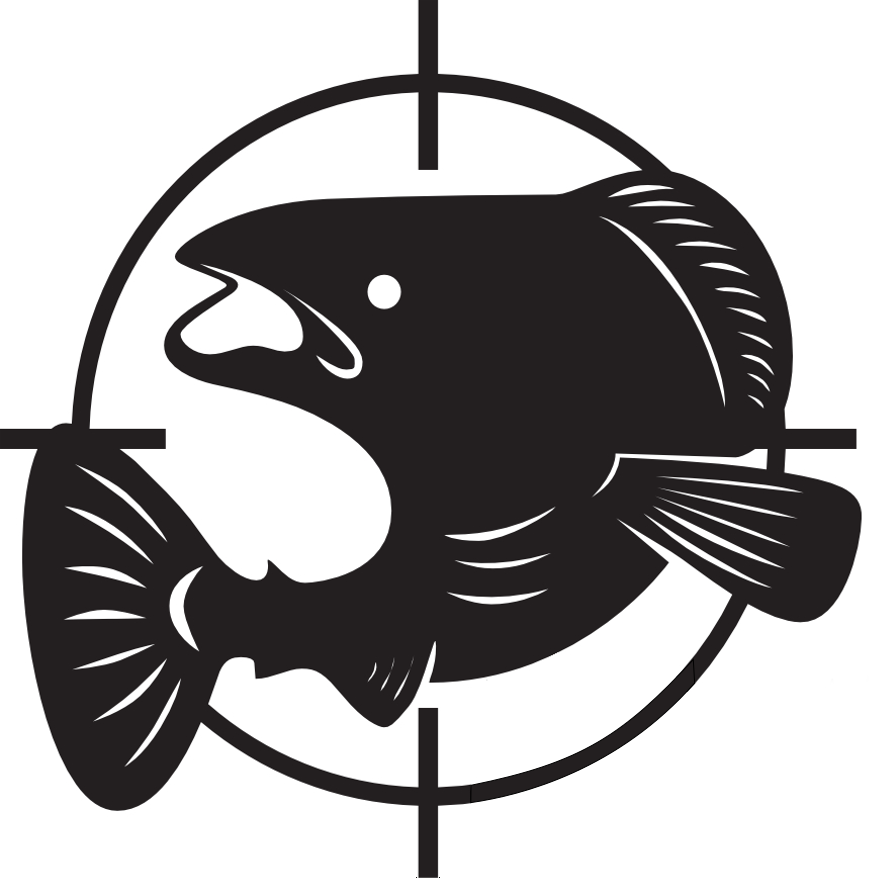Sometimes when I get bored I like to write up stuff like this to kill time while on duty. Hope ya'll are glad your tax money is going to me so I can do this stuff.
I posted it another forum a few days ago but forgot to add it here....because I save the best for last.
One of biggest question people have about fishing is "What color should I use"? In my opinion color IS important, but not for the reason people think it is. A lot of guys swear by a certain color for a certain fish/area of water/time of year. Some guys think that certain fish "love" a certain color. Yes, color is important but not because fish "love" that color. Ill explain my theory on this in a moment but first I want to point out that natural presentation (speed of retrieve, fishing with the current etc.) along with the proper lure (size, weight, action etc.) Is far more important than any color.
Here's an example:
Let's say that green is scientifically proven to be the best color for spotted bay bass. Other colors work too, but green is their "favorite" color. Angler 1 is throwing a green swimbait, but he is working against the current with a fast retrieve and the weight he has chosen is pretty heavy, thus not allowing the bait to look as natural as it would on a lighter head. Angler 2 is throwing the same swimbait (color doesn't matter). He is working with the current (presenting the bait naturally to the fish). He is using a lighter weight and working his bait slowly near the bottom in the same area as "angler" 1. I would put my paycheck on anger 2 90% of the time. This isn't a realistic example because no color has really been proven to be a favorite among spotties...but as long as you understand that color is an important factor after natural presentation and the right lure are selected you will be better off.
Here's my theory on why color is important, but not for the reason most people think it is. When a fish see's a black bait at night he could care less about the color black. What does matter is that the bait is providing a good silhouette against a lighter background. The same can be said about using a lighter, more transparent color during bright sunny conditions. Maybe you are using clear with red flake (one of my favorite colors in these conditions). Again, the fish could care less about the color. What the fish cares about is the fact that this color looks more natural and doesn't provide a huge contrast with the background, therefore not "spooking" the fish.
Colors to use:
For this I'm going to use the T&C Swimgrubs color chart as a reference simply because this is a popular bait among a lot of anglers on this site.
Night colors:
Black widow (that's the only nighttime color you need).
Like I said before, black provides a good solid silhouette at night for the fish to really key in on the bait. I have used other colors at night and have caught plenty of fish, but only did so because I ran out of my black widow swimbaits.
Low light conditions:
Here I'm talking about that time where the sun is just going down, or just coming up. This is often a "magical" time to fish and if you haven't fished during these times you need to! One of the reasons this time is so awesome to fish is simple. When the sun comes or goes fish (like humans) need to let their eyes adjust. The eyes of predatory fish adjust much faster than the eyes of the baitfish...giving them a huge advantage. During this timy I still use darker colors, but not black.
During this time you will find me throwing xmas oil 90% of the time. If using Big Hammer's this is a great time to use your toast, bleeding olive herring and similar colors.
Again, I'm still looking for a good silhouette but if you go to dark you may spook some fish, and if you go to light your bait will sometimes go unnoticed next to the thousands of disoriented baitfish trying not to die.
Sunny days:
During this time I go with lighter, more transparent colors. Choosing a natural looking color is often a good idea during this time of the day that the fish have the best vision.
I usually go with key lime, clear with red flake, and ghost shrimp. I also do great with aquamarine and razor clam during this part of the day, especially when working on the bottom (pretty much when I'm not working the docks). Other colors that would work great are:
Spotted minow, mackeral, jacksmelt, and grunion.
Now, there are times when I'll use a certain color for a certain area I'm fishing. Here, I'm trying to "match the hatch" a bit more than I would during other situations. When working the docks I'll usually drop ghost shrimp just because it has orange to it and resembles a crap falling off the pilings. I just ordered some baits in the fire crab pattern and I can guarantee the new crawdad pattern they have coming out will be an awesome crab imitation bait for working the docks and pilings.
When I'm working the eels grass I like to use ghost shrimp (a great all around pattern for every fish in the bay during just about every light condition). I also throw a lot of razor clam and aquamarines in the grass as well. But remember, this is a time where you will get a lot of reaction strikes. The fish don't see the bait as much in the eel grass but they feel it (lateral line).
A few other things to remember:
A fish's eye is made to see movement and contrast...not necessarily detail like a humans eye. So pick your color based on the light conditions first, and from there worry about other factors.
Some people like to match the hatch....but some people go the opposite direction. If there are a ton of baitfish in the area what makes your bait stick out from the others? Yea you can work your bait on the outside of the school, use eratic movement to make your bait look vulnerable...or simply let it flutter to the bottom making it appear as a dead or wounded baitfish. Your best bet often times is to use a completely different colored bait. Something that really sticks out. I wish I had the information in front of me, but I remember reading a study where largemouth bass would eat the oddly colored baitfish given to them before going after the normal fish. They see the oddly colored fish as something that might be wounded, but it is also something that sticks out amongst thousands of other fish.
Remember, color is important to a degree. Combine a good color with proper natural presentation of your artifical lure and you will catch a ton more fish.
Like most of the information I share, a lot of this is from my personal experience along with some scientific proof as well. What it comes down to is time on the water, and seeing what work's best for YOU. Some of the colors I suggested may not work in NPH as good as they do in San Diego bay....and vice versa. Get out on the water and fish...that is the most important factor.
Feel free to add stuff or give your opinion on things as well. Im interested in hearing some other "color theories"!
I posted it another forum a few days ago but forgot to add it here....because I save the best for last.
One of biggest question people have about fishing is "What color should I use"? In my opinion color IS important, but not for the reason people think it is. A lot of guys swear by a certain color for a certain fish/area of water/time of year. Some guys think that certain fish "love" a certain color. Yes, color is important but not because fish "love" that color. Ill explain my theory on this in a moment but first I want to point out that natural presentation (speed of retrieve, fishing with the current etc.) along with the proper lure (size, weight, action etc.) Is far more important than any color.
Here's an example:
Let's say that green is scientifically proven to be the best color for spotted bay bass. Other colors work too, but green is their "favorite" color. Angler 1 is throwing a green swimbait, but he is working against the current with a fast retrieve and the weight he has chosen is pretty heavy, thus not allowing the bait to look as natural as it would on a lighter head. Angler 2 is throwing the same swimbait (color doesn't matter). He is working with the current (presenting the bait naturally to the fish). He is using a lighter weight and working his bait slowly near the bottom in the same area as "angler" 1. I would put my paycheck on anger 2 90% of the time. This isn't a realistic example because no color has really been proven to be a favorite among spotties...but as long as you understand that color is an important factor after natural presentation and the right lure are selected you will be better off.
Here's my theory on why color is important, but not for the reason most people think it is. When a fish see's a black bait at night he could care less about the color black. What does matter is that the bait is providing a good silhouette against a lighter background. The same can be said about using a lighter, more transparent color during bright sunny conditions. Maybe you are using clear with red flake (one of my favorite colors in these conditions). Again, the fish could care less about the color. What the fish cares about is the fact that this color looks more natural and doesn't provide a huge contrast with the background, therefore not "spooking" the fish.
Colors to use:
For this I'm going to use the T&C Swimgrubs color chart as a reference simply because this is a popular bait among a lot of anglers on this site.
Night colors:
Black widow (that's the only nighttime color you need).
Like I said before, black provides a good solid silhouette at night for the fish to really key in on the bait. I have used other colors at night and have caught plenty of fish, but only did so because I ran out of my black widow swimbaits.
Low light conditions:
Here I'm talking about that time where the sun is just going down, or just coming up. This is often a "magical" time to fish and if you haven't fished during these times you need to! One of the reasons this time is so awesome to fish is simple. When the sun comes or goes fish (like humans) need to let their eyes adjust. The eyes of predatory fish adjust much faster than the eyes of the baitfish...giving them a huge advantage. During this timy I still use darker colors, but not black.
During this time you will find me throwing xmas oil 90% of the time. If using Big Hammer's this is a great time to use your toast, bleeding olive herring and similar colors.
Again, I'm still looking for a good silhouette but if you go to dark you may spook some fish, and if you go to light your bait will sometimes go unnoticed next to the thousands of disoriented baitfish trying not to die.
Sunny days:
During this time I go with lighter, more transparent colors. Choosing a natural looking color is often a good idea during this time of the day that the fish have the best vision.
I usually go with key lime, clear with red flake, and ghost shrimp. I also do great with aquamarine and razor clam during this part of the day, especially when working on the bottom (pretty much when I'm not working the docks). Other colors that would work great are:
Spotted minow, mackeral, jacksmelt, and grunion.
Now, there are times when I'll use a certain color for a certain area I'm fishing. Here, I'm trying to "match the hatch" a bit more than I would during other situations. When working the docks I'll usually drop ghost shrimp just because it has orange to it and resembles a crap falling off the pilings. I just ordered some baits in the fire crab pattern and I can guarantee the new crawdad pattern they have coming out will be an awesome crab imitation bait for working the docks and pilings.
When I'm working the eels grass I like to use ghost shrimp (a great all around pattern for every fish in the bay during just about every light condition). I also throw a lot of razor clam and aquamarines in the grass as well. But remember, this is a time where you will get a lot of reaction strikes. The fish don't see the bait as much in the eel grass but they feel it (lateral line).
A few other things to remember:
A fish's eye is made to see movement and contrast...not necessarily detail like a humans eye. So pick your color based on the light conditions first, and from there worry about other factors.
Some people like to match the hatch....but some people go the opposite direction. If there are a ton of baitfish in the area what makes your bait stick out from the others? Yea you can work your bait on the outside of the school, use eratic movement to make your bait look vulnerable...or simply let it flutter to the bottom making it appear as a dead or wounded baitfish. Your best bet often times is to use a completely different colored bait. Something that really sticks out. I wish I had the information in front of me, but I remember reading a study where largemouth bass would eat the oddly colored baitfish given to them before going after the normal fish. They see the oddly colored fish as something that might be wounded, but it is also something that sticks out amongst thousands of other fish.
Remember, color is important to a degree. Combine a good color with proper natural presentation of your artifical lure and you will catch a ton more fish.
Like most of the information I share, a lot of this is from my personal experience along with some scientific proof as well. What it comes down to is time on the water, and seeing what work's best for YOU. Some of the colors I suggested may not work in NPH as good as they do in San Diego bay....and vice versa. Get out on the water and fish...that is the most important factor.
Feel free to add stuff or give your opinion on things as well. Im interested in hearing some other "color theories"!

 Home
Home


























